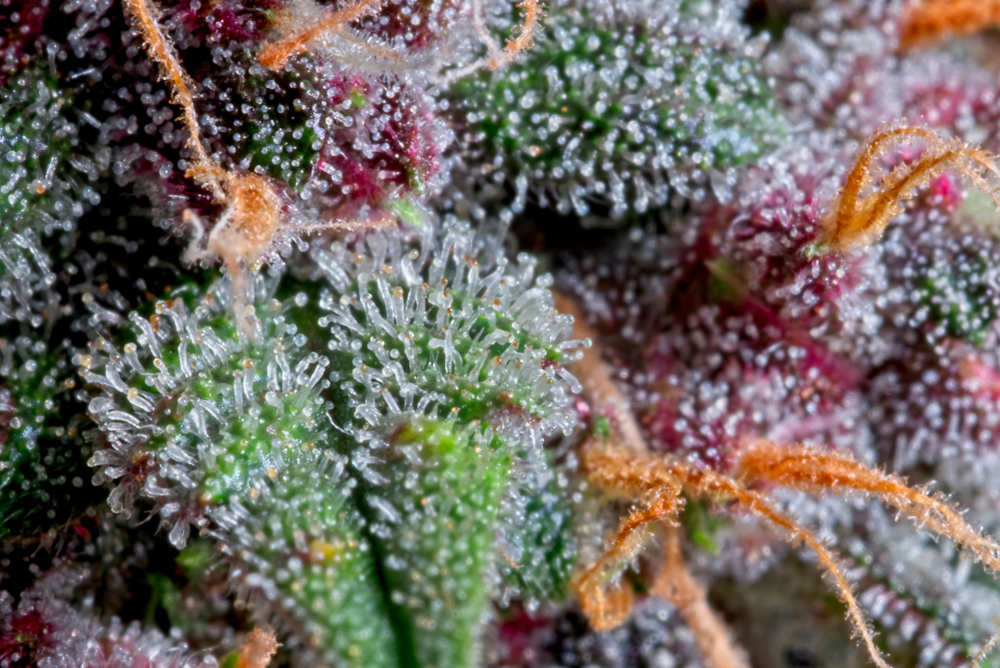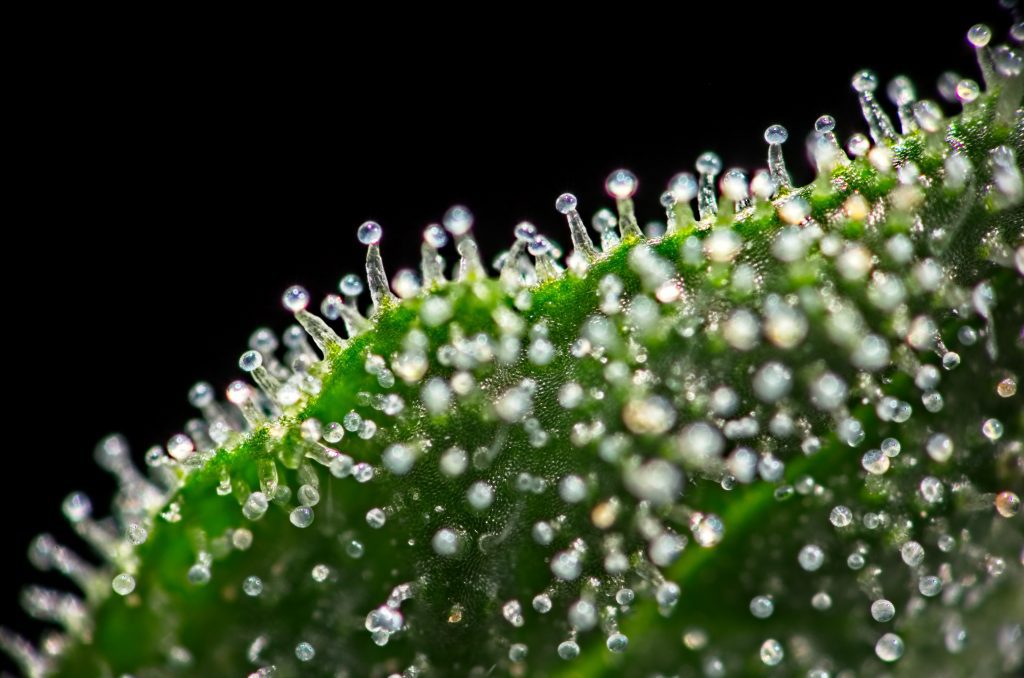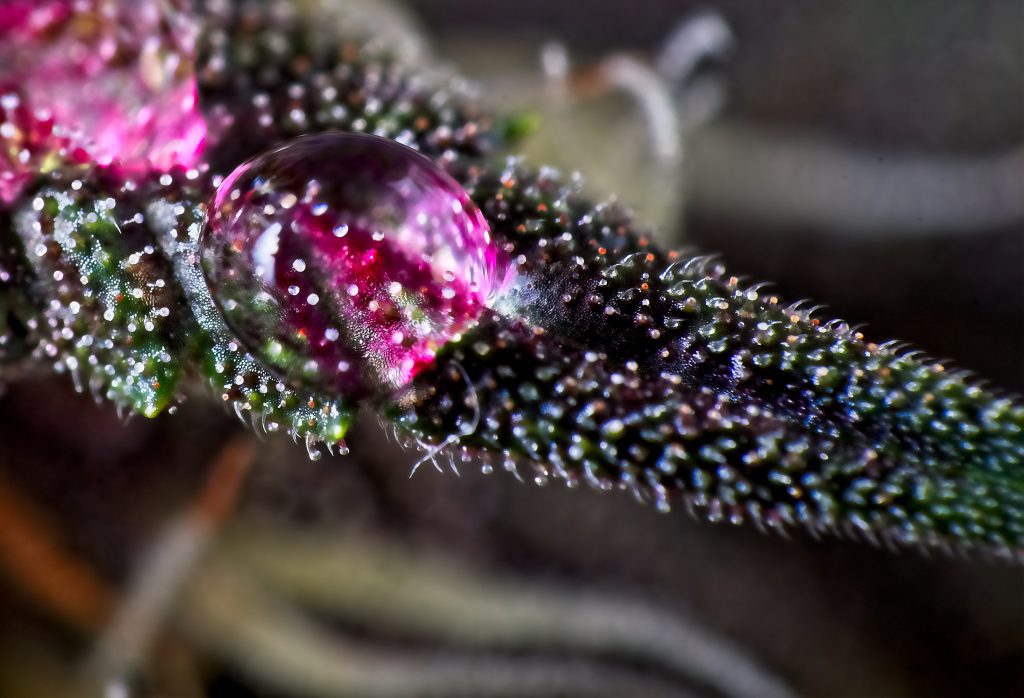It’s possible to increase resin and THC production in your plants, although only when they’re still alive; to do so when they’re dry would involve an alchemic process that we might deal with later on in a different article. Today we’re going to talk about how to raise the THC percentage in your plants. It’s known that there are no other plants in the world that are capable of producing THC; some can produce similar cannabinoids to CBG and CBD but there’s nothing similar to THC. This chemical composition is found in the resin from cannabis plants which serves the purpose of protecting the buds from UV-B rays. It’s been proven that plants grown at higher altitudes show much more THC; sativa plants from Ecuador or plants high in the mountains of India have more THC than those grown much lower down; the difference in these crops is, apart from air pressure, the quantity of UV-B rays.
Every cannabis plant has a mission, and that mission is to reproduce and make sure its genetics live on. Once the female flowers have been pollinized, they start growing seeds. During this process the plant will have to defend its progeny from insects, animals, fungi, light contamination etc. This caused marijuana plants to evolve and develop trichomes that, thanks to their sticky resin, protect the plants from all sorts of attacks. The resin in these plants is where you’ll find the cannabinoids that we all love. CBG is the first cannabinoid that will develop, and the enzymes in the plant then degrade once they come into contact with oxygen, turning CBG into other cannabinoids like THCa, which is the acidic form of the famous THC cannabinoid. Once THCa has been decarbonized, it becomes THC, and THC will also degrade to CBN due to plant maturity or the fact that the resin can degrade due to atmospheric issues. Either way, the longer you wait the more of a narcotic effect you’ll get from your plant as the CBN count will raise.
 The quantity of resin and degradation of THC depends half on the strain that you’re growing and half on the actual crop conditions. This means that you can have the best strain in the world but if it isn’t grown properly the results won’t be that good, compared to a less well-regarded strain that has been grown in perfect conditions which can give an amazing resin yield.
The quantity of resin and degradation of THC depends half on the strain that you’re growing and half on the actual crop conditions. This means that you can have the best strain in the world but if it isn’t grown properly the results won’t be that good, compared to a less well-regarded strain that has been grown in perfect conditions which can give an amazing resin yield.
Factors that influence how much resin a plant will produce are the temperature, the lighting, humidity and water quality. The temperature is a basic factor for decent resin production and it should be between 28 and 17ºC. Some people say that lowering the temperatures as much as possible will increase resin production; it might make shorter and more compact trichomes but it will put a halt to bud production, although your plant will continue to mature it just won’t grow any new flowers. If temperatures reach 28º then some vital substances will be lost in the resin, like essential oils and some terpenes. The trichome will become taller to defend the buds from the heat, but they’ll be much weaker and more likely to fall off therefore reducing resin production. These parameters define exactly how the resin is going to develop.
THC potency is decided, like we said before, by UV rays. There are three kinds of UV rays: UV-a, UV-b and UV-c. Like we said before, the more UV-b rays that your plants get the more production they’ll have but with a lower quality resin than expected, as these rays are extremely damaging to the resin’s composition. A 12 hour light period will give your plants a much more potent THC level than a 10 hour flowering period. The more intense the light, the more THC your plants will have.
 Indoors you’ll need to use bulbs that have this kind of UV ray and the right color spectrum, which is hard to do with just HPS lights. If you can afford the luxury of placing three lights at the same time we recommend combining one HM light and 2 HPS lights; this will raise the THC content but lower the final yield a bit, which is more or less the same thing that happens outdoors in high places like we mentioned before.
Indoors you’ll need to use bulbs that have this kind of UV ray and the right color spectrum, which is hard to do with just HPS lights. If you can afford the luxury of placing three lights at the same time we recommend combining one HM light and 2 HPS lights; this will raise the THC content but lower the final yield a bit, which is more or less the same thing that happens outdoors in high places like we mentioned before.
Another important factor for resin production and THC grading is environmental humidity. Plants that have a dry environment tend to produce more resin as well as have a higher concentration of THC due to the fact that they have to protect their buds from dehydration. This pushes the plant to produce more protective trichomes and terpenes, increasing both intensity and taste. Of course these natural reactions happen because the plant wants to product the seeds inside the flowers, but it will still happen even if you’re growing all feminized plants with no pollinator due to how ingrained it is in the plants natural defense system. Generally, plants that are grown in higher and dryer areas tend to produce more resin and more THC, and those that are grown in humid conditions don’t fair nearly as well. Of course there are strains that do incredibly well in humid areas like Thailand and Cambodia.
Insects can be used to deliberately attack the plants so that they raise their defenses in response to the stress, creating more trichomes and THC. This is similar to the legend about putting a nail in your plants stalk, which we do not recommend as you can cause your plant to get an infection and you might lose it. In theory it works because there’s a hormonal change in your plants whenever they’re extremely stressed; they would stop growing flowers but they’d also increase resin production as well as more terpenes and cannabinoids.
Now, it’s time to talk about some other myths that people use when trying to get more THC in their plants:
- Watering with LSD – Apart from being useless, even if this was done people would end up selling some super psychedelic weed on the market.
- Letting it die in the pot without watering it – One thing is controlled water stress, another is to let your plant suffer for no reason; this will actually lower THC production.
- Drying it in the sun – If you do this the THC in your bud will oxidize almost completely until it turns into CBN.
- Watering it with juice or soda before harvesting – Apart from the fact that your plants won’t have enough time to absorb it, you might end up overdosing it on sugar.
- Burying it in soil – if it’s humid you’ll end up with fungus and maybe possibly lung infections, and if it’s dry you’ll probably be fine to smoke it but it definitely won’t do anything to the THC levels.
- Pulling it out with the roots and boiling them – THC is in the resin, which is in turn in the buds, so doing anything at all to the roots is a bit silly.
Why not try growing your own with our amazing Organic seeds click here: https://hempearth.ca/product-category/organic-seeds/







